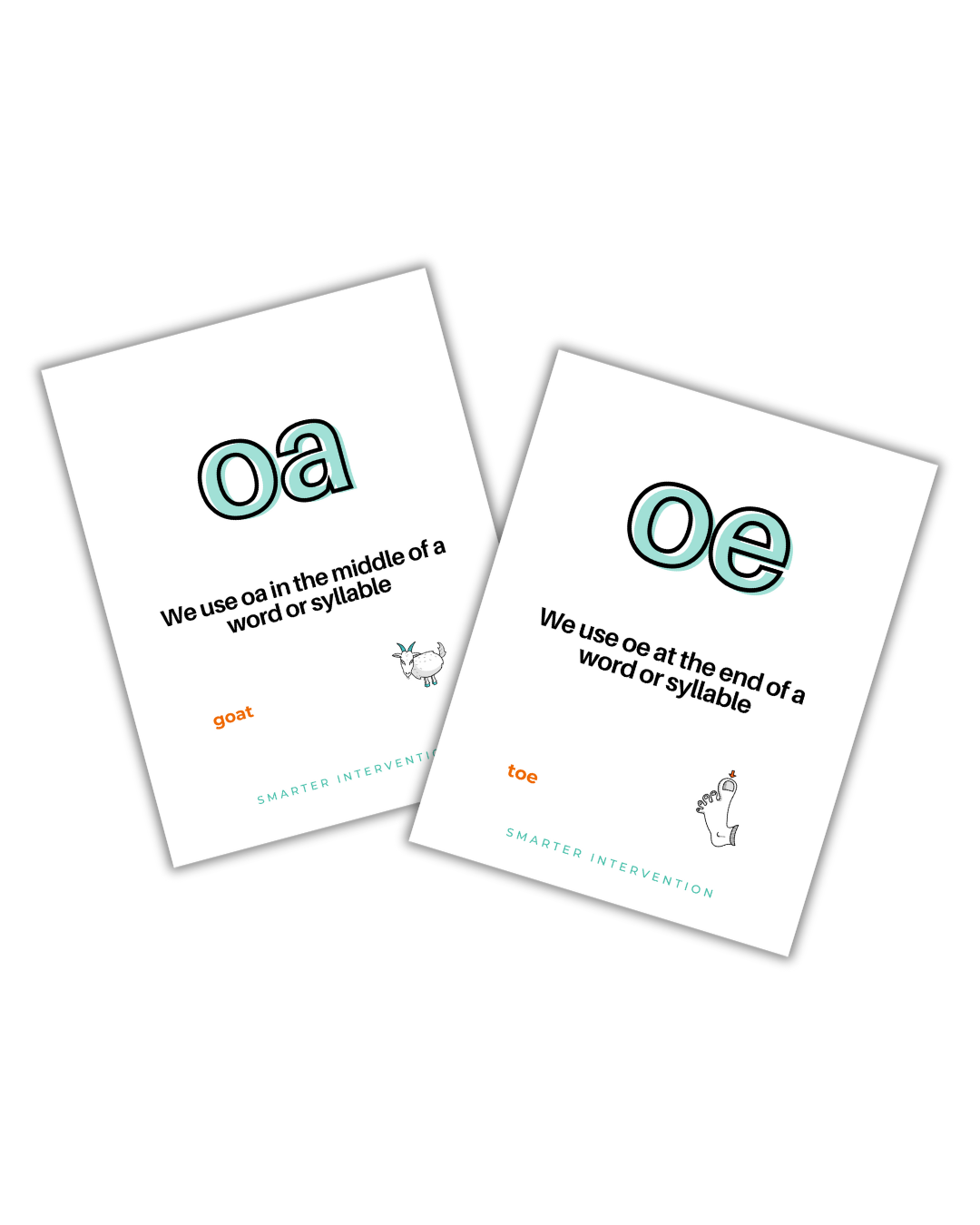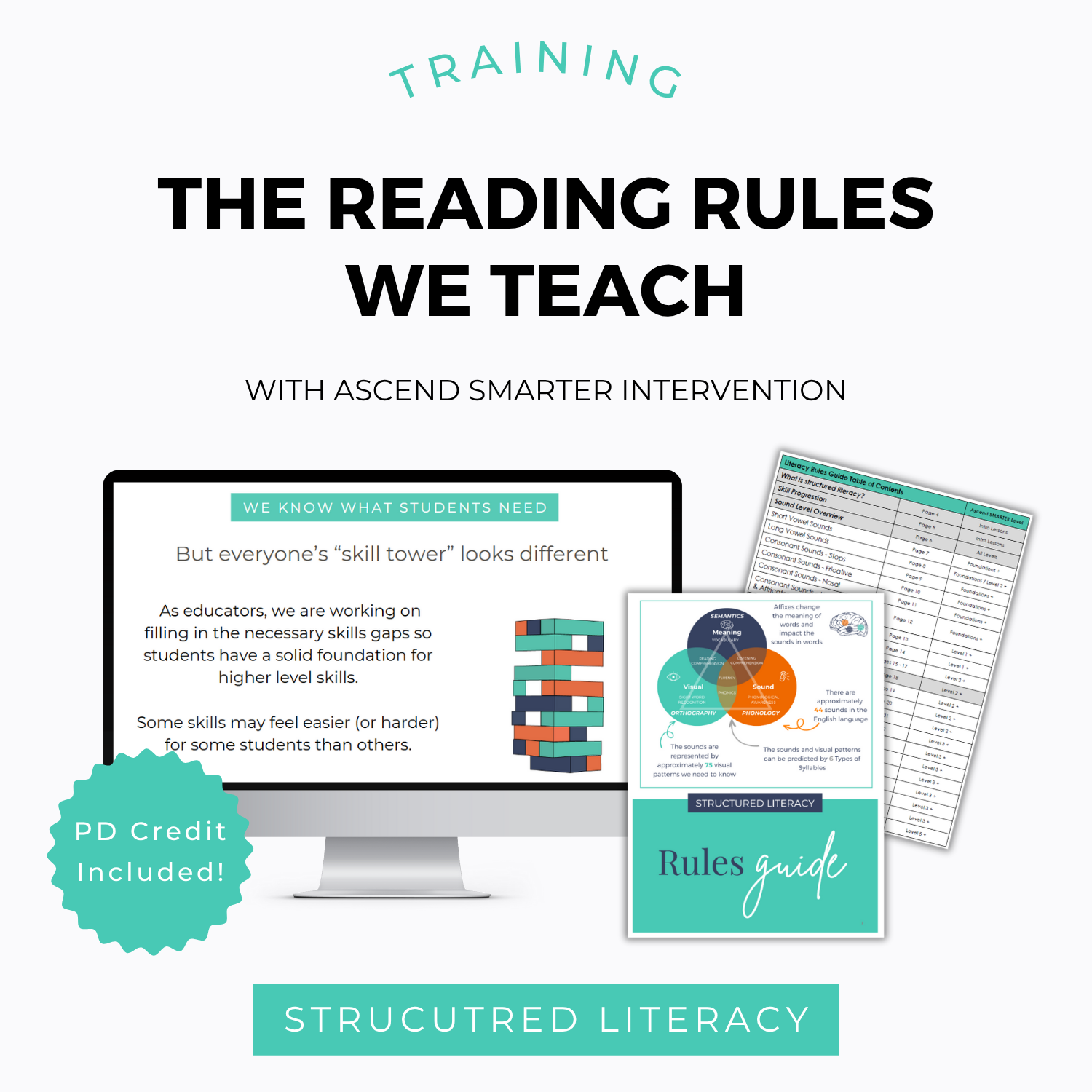How to Teach the oa/oe Spelling Rule
Why It Matters
Long‑O sounds (like in boat or foe) pop up everywhere in English, yet spelling them with oa or oe trips students up. Without a clear pattern, they resort to guessing. By teaching the oa/oe rule systematically, students can turn confusion into clarity, and spelling becomes more predictable. The structure of this rule gives them a dependable decoding and encoding tool.
What Is the oa/oe Rule?
OA and OE both make the long‐O sound:
Use OA when the /O/ sound appears in the middle of a word. Think goat, boat, gloat.
Use OE when you hear /O/ at the end of a word, like toe, foe, woe.
We anchor this with a memorable phrase:
“The Goat stepped on my toe.” 🐐🦶
OA = goat (middle); OE = toe (end). Simple, visual, sticky.
How We Teach the oa/oe Spelling Pattern
We follow the proven multi‑stage format, from sound to structured writing:
1. Teach the Sound in Isolation
Start by helping students tune into the long‑O sound and the two ways to spell it. Use anchor words:
OA as in “goat” (middle)
OE as in “toe” (end)
Bring in multisensory practice - say the sound, spell it, visualize the words.
2. Connect to Syllable & Spelling Patterns
Explain that both OA and OE are vowel teams that work together to make one sound. Highlight their positional tendencies:
OA happens mostly in the middle
OE is typically at the end
Make it clear that while these are the usual rules, context and occasionally syllable division can shift expectations.
3. Practice at the Word Level
Have students decode and encode with words like:
Middle (OA): goat, boat, gloat
End (OE): toe, foe, woe
As they advance, include words like poem, poet, Noel, where OE appears in the middle due to the Lion Syllable Division Rule (each vowel says its own sound)
4. Practice at the Sentence Level
Encourage creative and structured usage:
Sentence Building: “The goat looked at my toe.”
Sentence Dictation: “Joe admired the boat.”
Sentence Combining: Merge two OA and OE sentences for flow.
This moves students from isolated word work to meaningful application.
5. Extend to Paragraph Writing
Once ready, have students write a short paragraph or story that weaves in OA and OE words. This boosts creative application and reveals which parts of the rule are solid and which might need more review.
Where students might get stuck.
Some common mistakes include:
Overusing OE at the end when OA fits better
Applying the typical rules too rigidly. For example, misplacing OE in the middle without recognizing exceptions like poet or poem
Support strategies:
Lean on “The Goat stepped on my toe” 🐐🦶 for recall
Explicitly teach the Lion Syllable Division Rule, especially for words like poet, poem, Noel
Use visual aids, word sorts, and multisensory tools
Provide plenty of text exposure to reinforce pattern recognition over time
Looking to teach oa & oe in your lessons?
Depending on where you are in your teaching journey, here are a few next steps:
Just getting started?
Grab our Free Phonics Rules Posters! They’re perfect for hanging in your classroom or using as a quick reference when introducing a new pattern (not only will you get the oa & oe patterns, but tons of other patterns we teach too!).
Download Phonics Rules Posters » Get them here!
Want to see how we teach all the rules?
Check out our Spotlight PD: The Reading Rules We Teach (and Why They Matter!)
This 1-hour on-demand training provides you with everything you need to help you confidently teach the rules that actually move the needle, without getting lost in all the complexity.
You’ll get a clear, research-backed framework that shows which reading rules to focus on, why they matter for the brain, and how to teach them at each level—sound, syllable, word, sentence, paragraph, and passage.




